We’re All Under Mirror Palais’ Spell
Marcelo Gaia, the founder and designer behind fashion’s cult-favorite brand, discusses the forthcoming third collection.
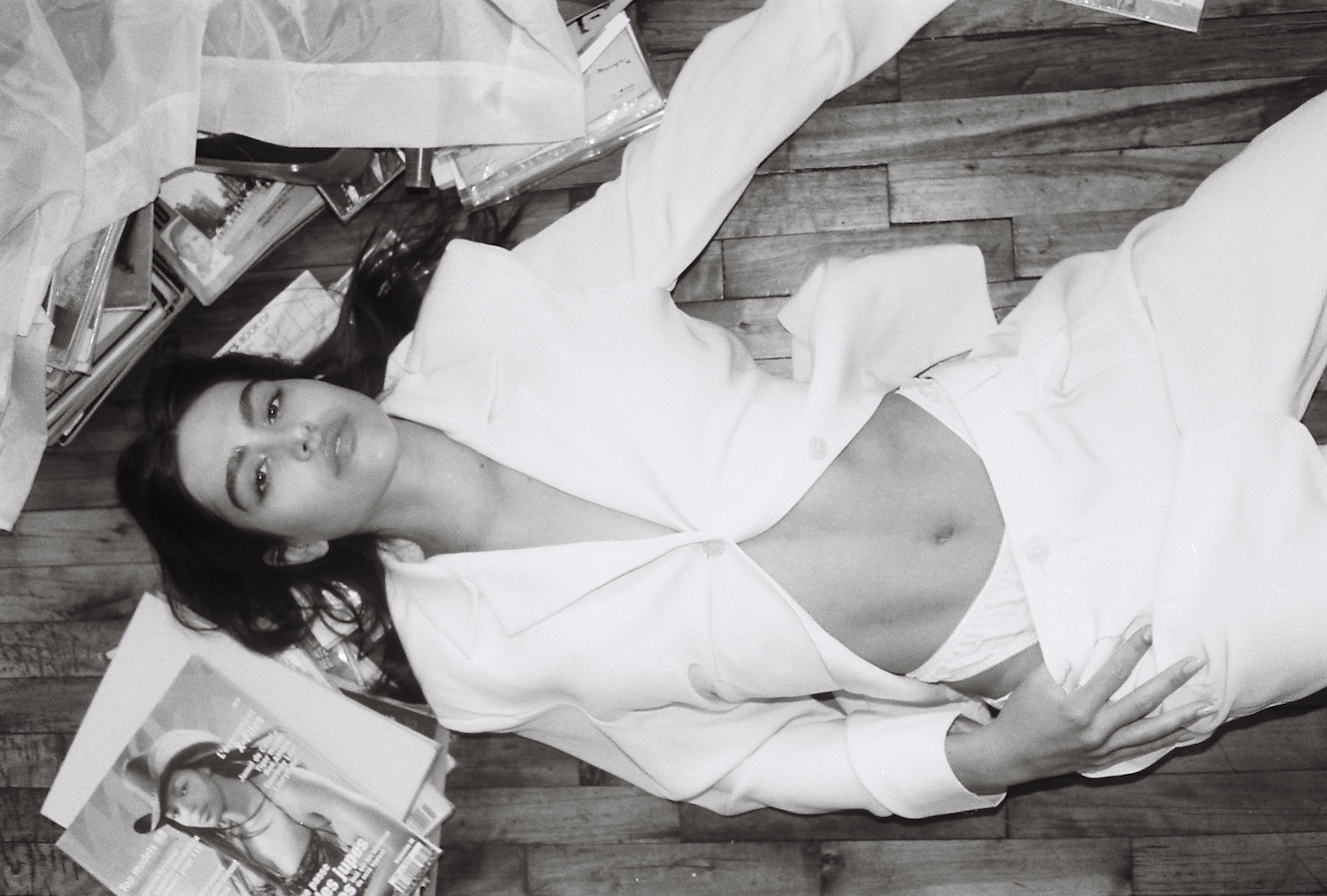
You’ve probably seen one of Marcelo Gaia’s designs on social media without even realizing it. Mirror Palais, the brand he founded in 2019, is ubiquitous on the fashion sides of Instagram, Pinterest, and TikTok. From the sexy underwire polo top worn by Bella Hadid to the dazzling fairy dress—which fans affectionately call the ‘break-up’ dress because of its major look-what-you-lost vibes—Gaia’s creations are all characterized by a nostalgic, sexy, and powerful aesthetic. Another part of the appeal: Mirror Palais is a made-to-order brand, which allows it to reduce waste and implement ethical practices and wages. It’s no wonder the burgeoning brand has built up such an impressive roster of celeb clients and It girls.
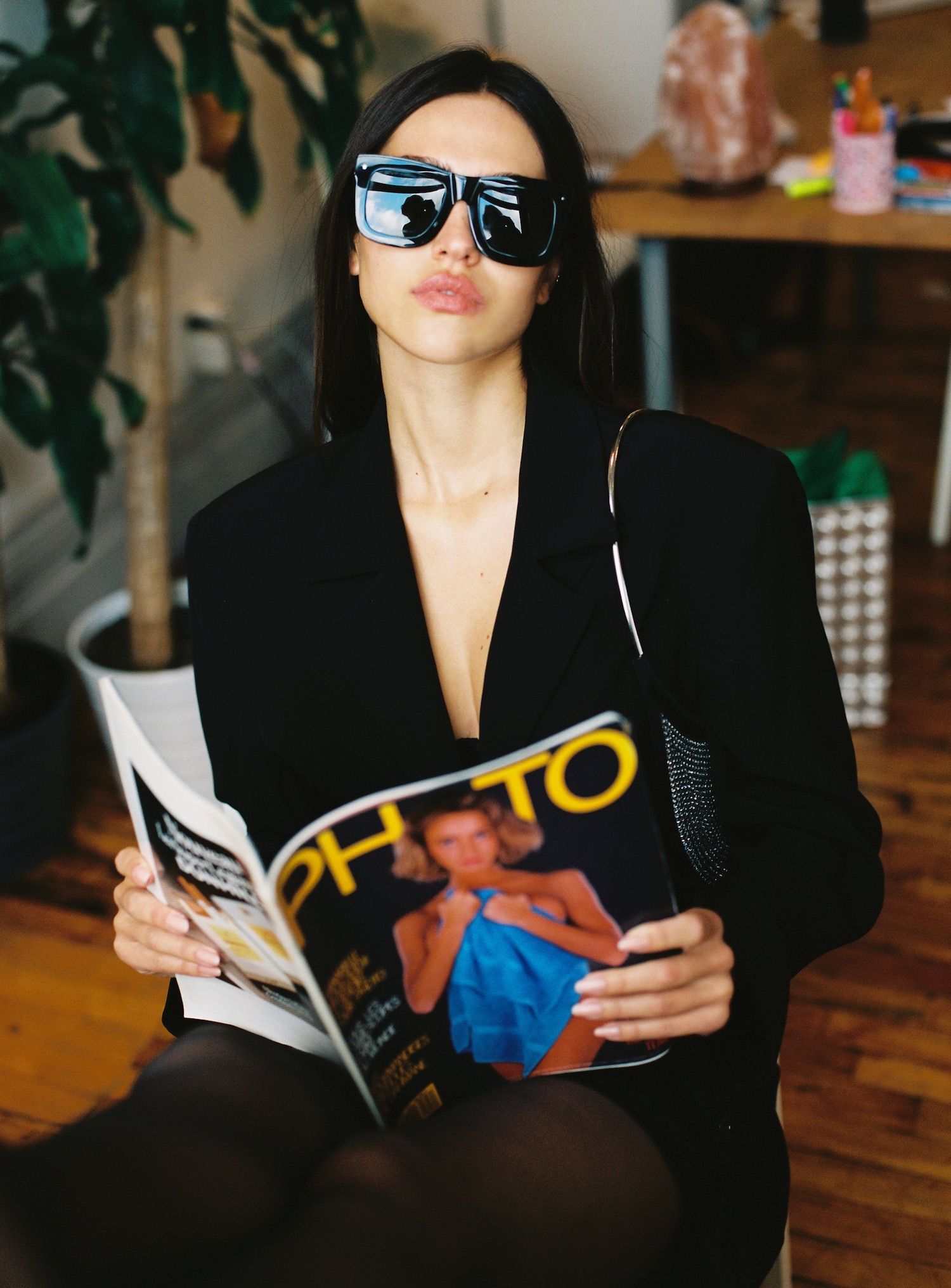
As we get further into the new year, the anticipation for the label’s next drop couldn’t be higher. With two collections already launched, Mirror Palais is past the definitive part of its existence. Now, Gaia and his team have the freedom to expand upon what’s come before in new and unexpected ways. Of course, Gaia promises that the brand will continue to surprise the Mirror Palais girl with the dream pieces she didn’t know she needed. V caught up with the man behind the curtain—er, mirror—to learn more about the inspiration behind the forthcoming collection, the new Mirror Palais workspace, and his dreams for the label’s future.
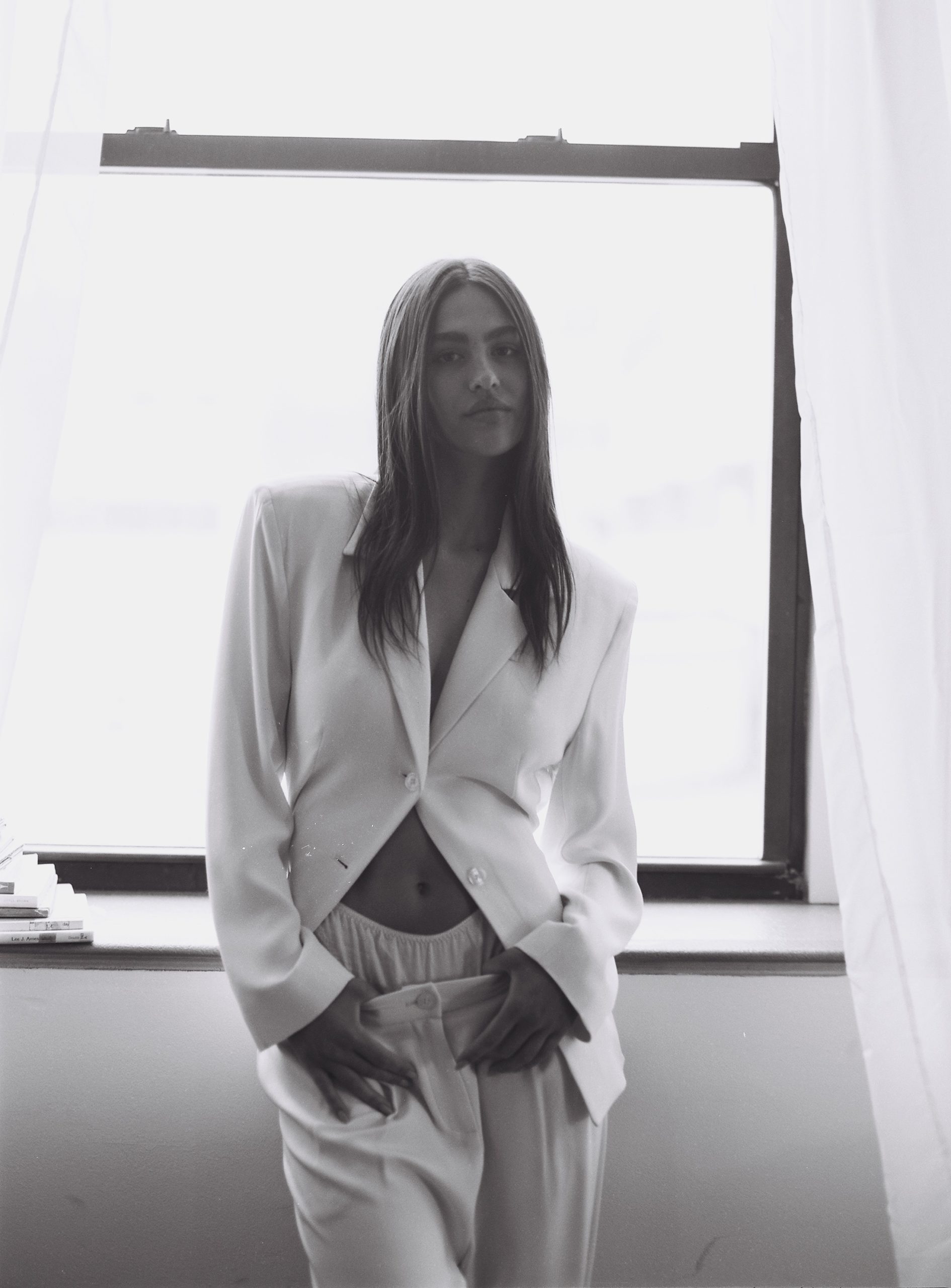
V Magazine: What was the inspiration behind Mirror Palais’s forthcoming collection? Any particular themes you were working with?
Marcelo Gaia: The first thing going into this third collection that I have kept in mind really heavily is the idea of wearability. Making sure that everything we’re putting out is wearable but still exciting—it still has some sort of vintage-inspired or nostalgic element to it. I think that the inspiration for this collection—some of it was just me wanting to update the concepts and shapes from the past two collections, and then I also wanted to continue to explore the niche that we’ve created a bit further.
V: How does it diverge from what you’ve made before? Or, does it play on the same themes as the previous two collections?
MG: I really don’t think it diverges from the previous collections in any way, aside from color. I used a lot of color in the last collection, and this one is a lot more neutral. Other than that, it really is a continuation of everything our team has learned, and everything I’ve learned, while selling to my customers for the past two years. I’ve been learning how I can offer them more of what my community is looking for. I’m trying to respond to them and react to how they reacted to the pieces. To give them more of what they’re looking for, but also continue to excite and surprise them. The idea has always been about creating dream pieces, more so than creating a collection. Creating a dream wardrobe. That comes first and foremost when I’m designing.
I don’t design a collection in the sense of—I don’t have a mood board of where I want to for this season, Texas or Timbuktu or whatever, and these are our colors. Instead I design piece by piece, and then each piece, as it’s being developed, shapes into something where we’re really happy with it. Then, afterward, if there’s an element we really like from one piece, while we’re developing another piece we might say, ‘That’s a great place to repeat that element.’ That way it keeps the collection and the design feeling cohesive.
V: What’s the timeline behind the new collection? When did you first start working on it?
MG: Some of the new collection’s designs were done quite a long time ago, and some were done just a few days ago. Some of them are ideas I’ve had in my head or put down on paper quite a while ago. When people ask me where my inspiration comes from, I always say it comes from my head in the sense that it’s everything I’ve seen up until now. I have a really photographic memory. Everything I’ve seen that’s important to me gets stored, and so I’m constantly pulling upon ideas that I’ve had logged in my head over time. Maybe I saw something in 1999 that really stuck with me and resonated with me, something I saw in a film or in person, or the way that something was described in a book. I guess in that sense, I started working on this collection years ago. There’s a big range to how the creative process started, and it feels like it started a long time ago. I’m just continuing to pull from ideas that I’ve had while also keeping myself open to having new ideas.
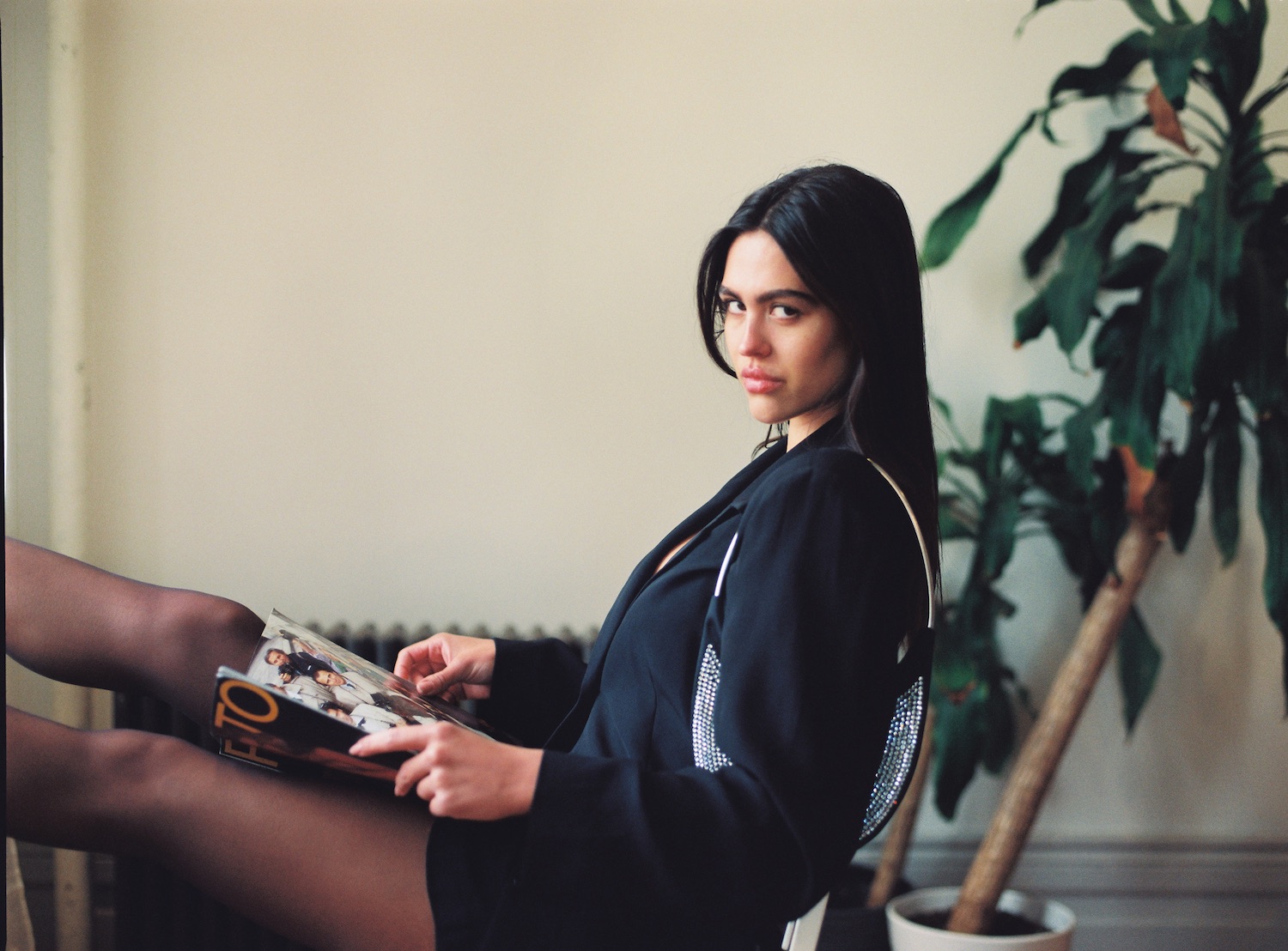
V: Where has this collection been coming to life? Have you been working in the same studio or design space as before, or in a new space? How does it reflect you as a designer?
MG: I’m in my office that I moved into at the top of last year. It’s changed so much since we got here. We were working on a glass dining table, basically—me and my whole team. Now, I’m sitting at my own desk, and everyone here has their own desk as well. It’s kind of funny because it’s set up like a classroom. The entire development process happens here, in our office. We have pattern makers who work from home to create patterns and samples, and then we fit here. We do fittings on employees, on different friends of the brand.
We always try to fit on different body types within the same size range, which I think is really important. Rather than us having one ‘size small’ fit model, we have multiple models based on what one sized-small person could be. That’s done in the hopes that people with different body types will be able to fit into each size. I always found it weird, the idea of having one fit model for your standard size, because then you don’t know what’s going to happen if someone has a higher or lower bust, or a wider waist but the same sized hips. I don’t want the clothes to only fit one person or one body shape. It’s been more or less the same process since we started, but now we know more and know better, so we’re able to execute more.
V: Was there any one piece in the collection that was challenging to execute or edit?
MG: Some of them are definitely more simple. As far as more challenging, we work with a lot of pieces that are cut on the bias, so we’re constantly learning and being challenged by that method of design and working. Anything that’s been cut on the bias has been pretty tough. It’s even hard for sample makers to sew it correctly, let alone to make sure the pattern is correct. It takes a well-trained hand to sew silk on the bias, so we don’t really know what it’s going to look like until it gets to our main contractor who does silk. They’re the only person right now that we work with that we can really trust with silk on the bias.
V: The Mirror Palais blazer is featured in the shoot with Amelia Gray. It’s a very sexy, fun take on the usual formal silhouette. How did you keep that piece from feeling too formal?
MG: I had that blazer made in late 2019, early 2020. I guess I just wanted it to have more shape, and we added belt loops to it. Rather than tie it across the waist—which I sometimes see customers do, and I’m like, no! That’s not how it’s meant to be worn. Instead, we just tie it on the back, which is something I’ve seen people do forever. It’s done in a really drapey fortified silk which I think is what makes it look so sexy and nonchalant, because it’s so soft. But then it still has the shoulder pads, so it’s a really nice shape with the shoulder and being able to tie the waist as tight as you want. It’s a super versatile piece.
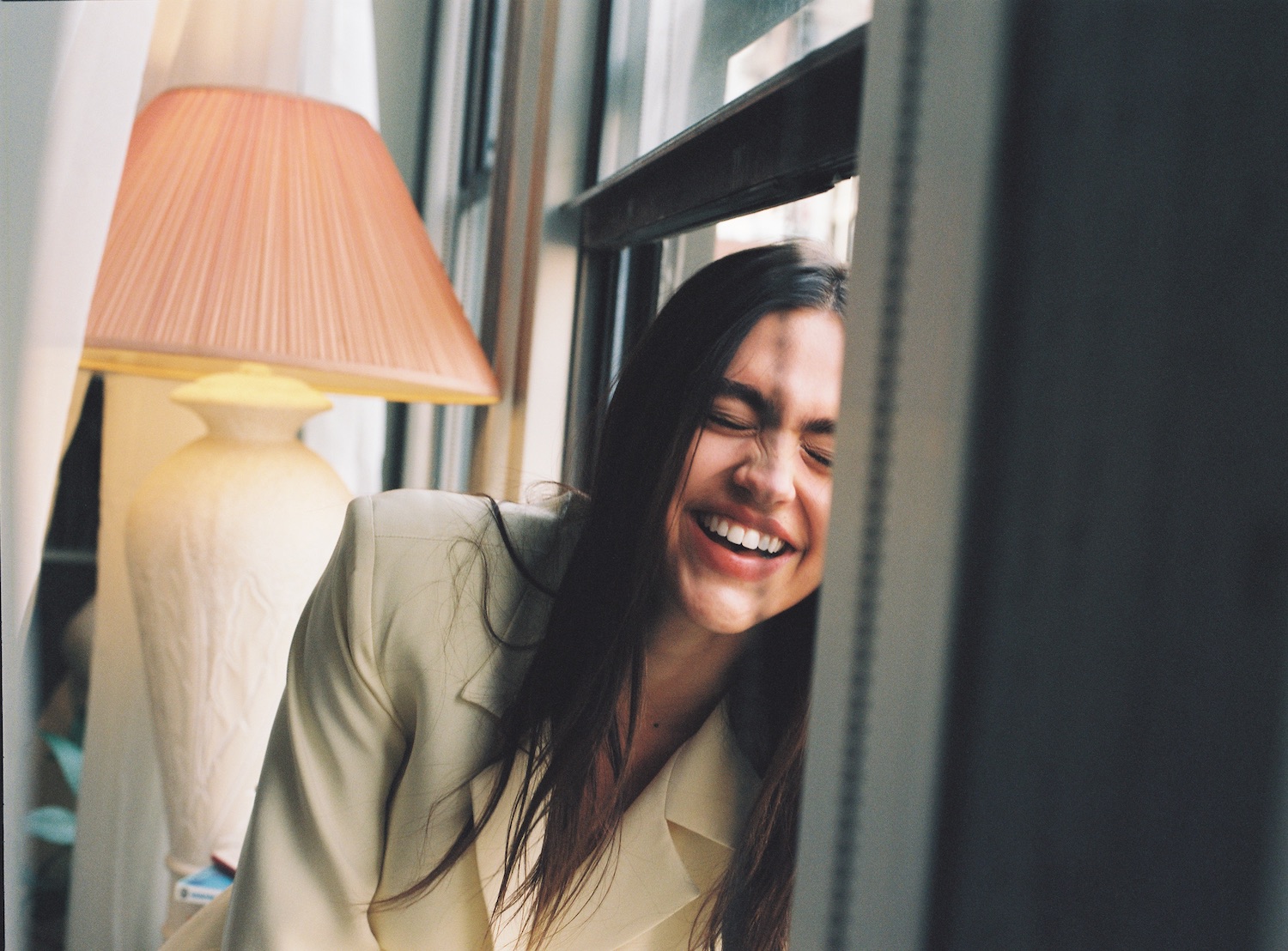
V: Thinking about Mirror Palais’s continual growth of fans and followers, how do you block out the noise and stay true to the brand while being under an increasing spotlight?
MG: I think if I were to completely ignore the noise, it would render me incapable of growing. I feel like my following is comprised of intelligent women who have amazing points of view. When I get feedback, sometimes, I really do internalize it and make it a focus in the work that I’m doing moving forward. I think having that feedback is really important—while having the distinction between a great suggestion and someone being a hater. I try to check in with my team, and we can decide together whether someone’s feedback is coming from a good or a bad place. It’s about creating beautifully. I have so many things I want to do, so many ideas, so I’m just making sure that at the end of the day, pieces look really special. And I can’t deny my intuition. If something’s telling me, no, this isn’t right, then I listen. If I’m really excited about something and I really love it, I listen to that too. It’s a balance.
V: Obviously, the brand is still young, but what is the future of Mirror Palais? Do you still see it going in a brick-and-mortar direction?
MG: I’d like to see where things are going in terms of the market before I make any big commitments like a brick-and-mortar store. I had an amazing experience with our pop-up shop. I just loved that people could go in, find something amazing, and then wear it later that night. There was a customer who came in and bought a white slip dress, and then came in the next day and was like, ‘I’m so sorry, I got red lipstick on my dress, so I wanted to come in here and ask you how to get out.’ We recommended a dry cleaner close by—I don’t know if she got the lipstick out of her dress. I hope it worked out. But, I liked that people were able to go in, shop, and wear the clothes that night. That, to me, is an exciting concept, because I love doing that. I love going vintage shopping or thrift shopping and finding something. I’m grimy, I don’t care, I’ll wear it that night without even washing it.
I just want to make good choices. I’m pretty conservative [with business decisions,] so I want to be super measured with the decisions that I’m making and where I want to take this. I don’t know. I’m going to keep my finger on the pulse of where the industry’s going, because it’s changing so much, and I’ll see where that takes me. But one day it would be really nice to have a place where people could come in and order custom clothes—where they could get measured and have these amazing, perfectly-fitted clothes made for them here in New York. That would be our long-term goal.

For more on Mirror Palais and designer Marcelo Gaia, click here!
Discover More
